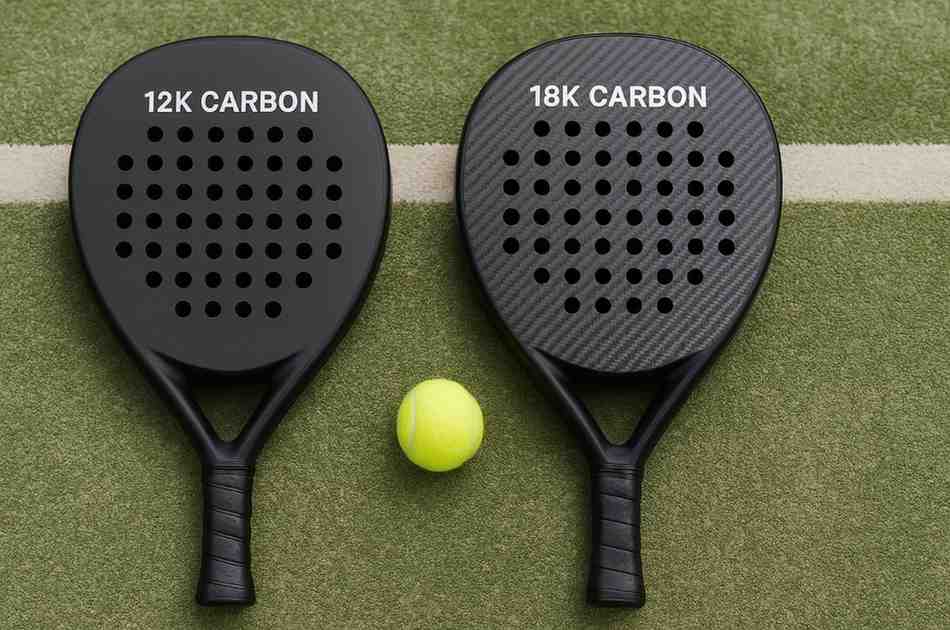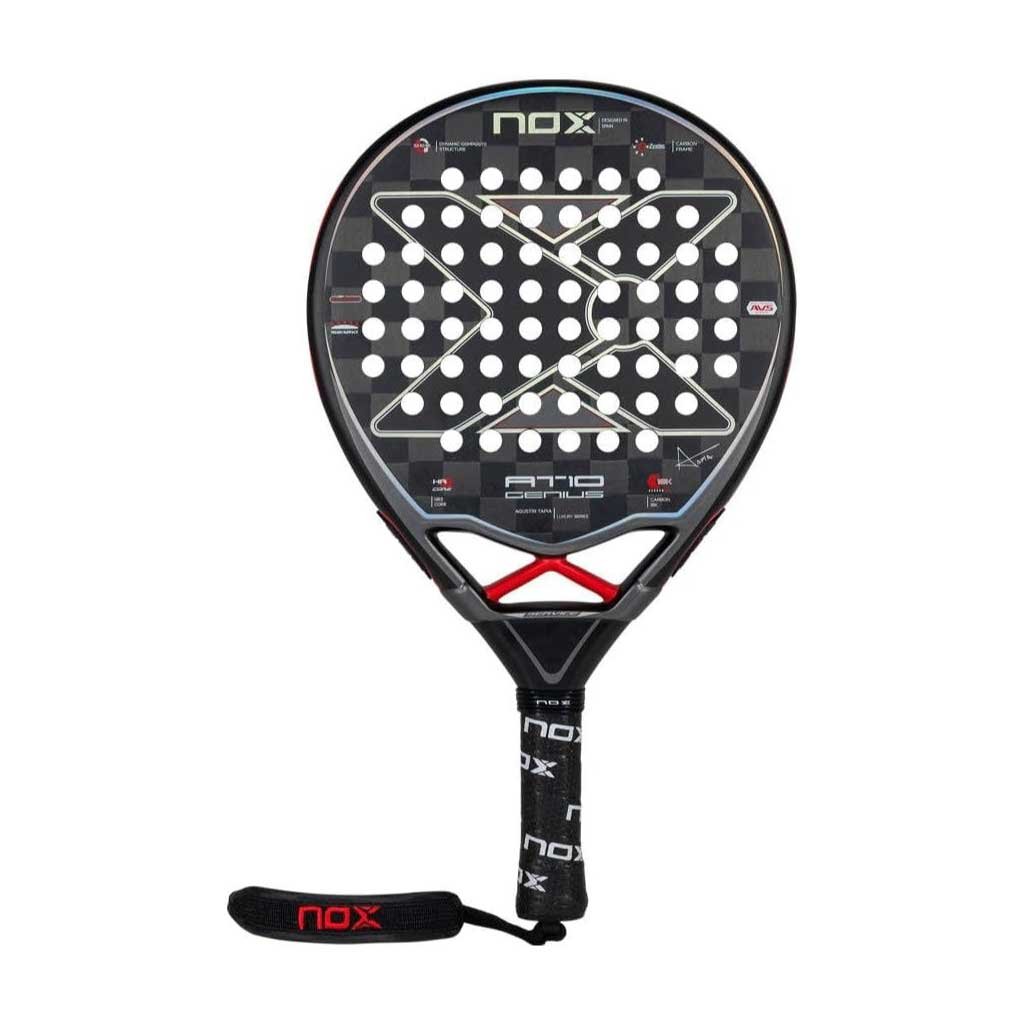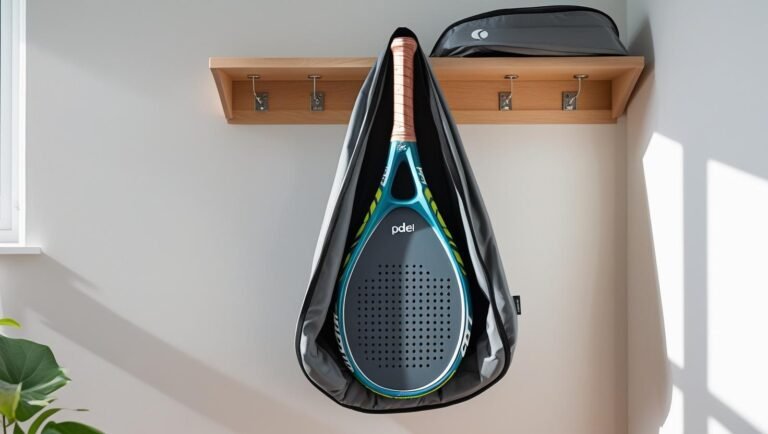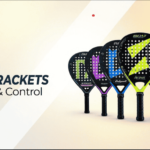Want a shortcut? Take a quiz and find your perfect Padel Racket in 30 secs.

12K and 18K Padel Rackets Compared: Ultimate Performance Guide (2026)
If you’re comparing 12K and 18K padel rackets, you’re likely trying to figure out how the type of carbon fiber impacts your performance on the court. While both are commonly found in high-end rackets, the differences in carbon structure significantly affect power, control, flexibility, and overall feel.
In simple terms, 12K carbon consists of 12,000 filaments per bundle. This gives 12K padel rackets a softer, more flexible surface—ideal for players who prioritize comfort, precision, and a smooth touch. In contrast, 18K carbon features 18,000 filaments per bundle, creating a stiffer and more powerful surface that supports faster, more aggressive shots.
Understanding the performance differences between 12K and 18K padel rackets is crucial when choosing the right model for your game. Whether you’re looking for a racket that excels in control and finesse or one that delivers explosive power and speed, this guide breaks down everything you need to know to make the right choice in 2026.
12K and 18K Padel Rackets: What They Mean and How They Differ
When it comes to high-performance padel rackets, the difference between 12K and 18K carbon fiber lies in the number of filaments woven into each bundle of the material. This bundle density plays a significant role in how the racket feels, performs, and responds on the court.
12K Carbon Fiber: 12,000 Filaments per Bundle
A 12K carbon padel racket contains 12,000 carbon filaments in each weave. This makes the racket face slightly more flexible, allowing for better shock absorption and a softer feel during contact. The increased flexibility offers superior control and comfort, which is why many players choose 12K rackets for longer rallies, net play, and precision shots.
Best for players who prefer control, comfort, and finesse over raw power.
18K Carbon Fiber: 18,000 Filaments per Bundle
On the other hand, 18K carbon padel rackets are made from denser bundles containing 18,000 filaments. This tighter weave creates a firmer and stiffer surface, enhancing energy return and delivering a more powerful response on smashes and volleys. Players who prefer to hit aggressively and rely on pace will appreciate the explosive feel that 18K rackets provide. If you’re wondering which option suits your game, understanding how different 12K and 18K padel rackets are is essential for making the right choice.
Best for advanced or aggressive players seeking more power with every shot.
Texture & Visual Differences
The surface texture also differs between the two types. 12K carbon has a more open weave and slightly smoother texture, whereas 18K carbon looks tighter and feels more compact. You can often tell the difference by the pattern on the racket face.
Why It Matters:
Understanding the differences between 12K and 18K carbon fiber padel rackets enables players to select a racket that suits their physical strength, playing style, and performance goals. Whether you’re after more control or raw power, the type of weave plays a significant role in your experience.
Essential Performance Differences Between 12K and 18K Padel Rackets
| Feature | 12K Carbon | 18K Carbon |
| Feel | Softer, more control | Stiffer, more power |
| Flexibility | Higher | Lower |
| Control | Better | Moderate |
| Power | Moderate | Higher |
| Recommended For | Intermediate, control-focused players | Aggressive, advanced players |
Ready for More?
- Best Nox Padel Rackets
- Nox vs Wilson: Which Padel Racket Brand is Better?
- Best Padel Rackets for Spin and Control
- Why Do Padel Rackets Have Holes
- Head vs Nox: Which Padel Racket Brand is Best for You?
- Why Do Some Padel Rackets Cause Elbow Pain
- Best Junior Padel Rackets for Young Players
- Best carbon fiber padel rackets
- Best Padel Rackets for 2026
- Best Padel Shoes for top players
Who Should Use 12K vs 18K Padel Rackets?
Choosing between 12K vs 18K padel rackets ultimately comes down to your playing style, experience level, and physical needs. Both carbon types offer unique advantages, and understanding these differences can help you avoid injury and get the best performance on the court.
12K Carbon Rackets: Comfort, Control, and Feel
12K padel rackets are best suited for players who prioritize comfort, finesse, and precision. Thanks to their softer construction and increased flexibility, these rackets absorb more vibration, reducing stress on the elbow and shoulder. This makes 12K rackets an excellent choice for:
- Intermediate players looking to improve consistency and ball placement
- Defensive or tactical players who prefer long rallies and net play
- Anyone recovering from elbow discomfort or seeking a more forgiving racket.
If you’re developing your technique and need a reliable, comfortable tool to build confidence, 12K carbon padel rackets are a wise and safe investment.
18K Carbon Rackets: Power, Speed, and Aggression
18K padel rackets, featuring a denser carbon weave, provide a stiffer response and greater power output. The tighter structure transfers energy more efficiently, giving players more explosiveness on smashes and volleys. This makes them ideal for:
- Advanced or professional-level players with fast swing speeds
- Aggressive hitters who want maximum power with every shot
- Athletes with strong technique and physical conditioning
However, the stiffness of 18K carbon rackets can lead to higher impact forces on the arm, increasing the risk of discomfort if your technique or timing isn’t precise.
Injury Prevention: Comfort vs Power
Suppose elbow pain or joint strain is a concern. In that case, the 12K vs 18K padel racket comparison leans toward 12K for safety. Softer rackets minimize vibration and reduce fatigue during long matches. In contrast, 18K rackets should be used with proper warm-up and good mechanics to avoid injury.
Racket Examples with 12K and 18K Carbon
NOX AT10 12k Best for: Control & Comfort


The NOX AT10 12K is a standout option among control-focused 12K padel rackets. Designed in collaboration with Agustín Tapia, this racket is engineered for players who prefer a softer, more controlled playing experience.
Key Features
- Shape: Round
- Core: HR3 EVA Core (high-recovery foam for better ball exit)
- Surface: 12K Carbon Fiber
- Weight: ~360g
- Finish: Rough texture for improved spin
NOX AT10 18K Best for: Explosive Power


The NOX AT10 18K is designed for performance-oriented players seeking a stiffer, more responsive feel. Its 18K carbon fiber surface makes it one of the most explosive rackets in the NOX range.
Key Features
- Shape: Teardrop
- Core: HR3 EVA Core
- Surface: 18K Carbon Fiber
- Weight: ~360g
Final Thoughts – Choosing Between 12K and 18K Padel Rackets
When deciding between 12K and 18K padel rackets, the key lies in understanding you’re playing style, physical comfort, and performance goals. Both materials offer high-quality carbon fiber construction but serve different types of players.
If you’re a control-oriented player who values precision, finesse, and comfort over raw power, a 12K carbon padel racket like the NOX AT10 12K is a better match. Its softer surface absorbs impact, reduces vibration, and helps improve shot accuracy — a key factor during volleys and defensive play.
On the other hand, if you’re an aggressive attacker with strong technique and fast swings, the NOX AT10 18K or similar 18K carbon padel rackets offer more explosive rebound and stiffness for powerful smashes and faster point finishes.
How to Test the Right Carbon Fiber for You:
To truly experience the difference between 12K and 18K padel rackets, try both on court:
- Hit volleys and smashes with each to feel the rebound.
- Note the vibration and how your arm responds after long rallies.
- Test control shots and placements to assess feel and comfort.
Real-Play Difference:
- 12K carbon excels in soft touch shots, lobs, and returns.
- 18K carbon dominates in overhead smashes, aggressive volleys, and fast-paced exchanges.
By testing both models, you’ll feel how the carbon fiber padel racket differences affect your performance in real-match scenarios.
Ready for More? You’ll Love This Insight
- How to Choose the Right Padel Racket
- Best Babolat Padel Rackets
- Head vs Babolat: Which Padel Racket Brand is Better?
- Best Padel Rackets for Women
- Best Padel Rackets for Men
- Nox vs Adidas – Which Padel Racket Brand is Right for You in 2026?
- The Difference Between Fibreglass and Carbon Padel Rackets
- How to Replace the Grip on a Padel Racket
- Can You Use a Tennis Racket for Padel?
- Head vs Wilson: Which Padel Racket Brand is Better in 2026?
- Best Padel Racket Accessories
- Head vs Adidas: Which Padel Racket Brand is Best for You?
- Adidas vs Wilson: Which Padel Racket Brand is Better?
- The Evolution of Padel Rackets Over the Years
- Nox vs Babolat: Which Padel Racket Brand is Better in 2026?
- Best Padel Rackets for Professional Players
FAQs
The terms 12K and 18K refer to the number of carbon filaments used in each fiber bundle of the racket’s surface. 12K carbon includes 12,000 filaments per bundle, resulting in a softer and more flexible feel. 18K carbon, on the other hand, has 18,000 filaments per bundle, making the surface stiffer and more responsive. These differences impact how the carbon fiber padel racket performs on the court, particularly in terms of power, control, and vibration.
Not necessarily. 18K carbon padel rackets are better for players seeking more explosive power and a firmer response, especially on smashes. However, 12K carbon padel rackets offer more comfort and better control, making them ideal for finesse-based play. The choice between 12K vs 18K padel rackets depends on your skill level and playing style — neither is universally “better.”
Yes, 18K carbon rackets generally provide more power because the stiffer surface offers a faster rebound effect. This makes it easier to hit aggressive shots and smashes. That said, power also depends on technique, racket shape, and core material, not just the carbon fiber layer.
If you’re dealing with arm or elbow discomfort, a 12K carbon padel racket is usually the safer choice. It’s more flexible and better at absorbing vibration, reducing the risk of injury or aggravation. In contrast, 18K carbon is stiffer and may transmit more shock to the arm during play, especially in long matches.






